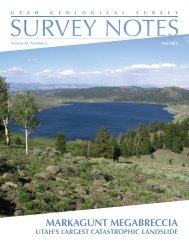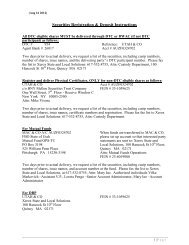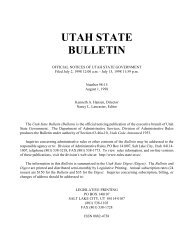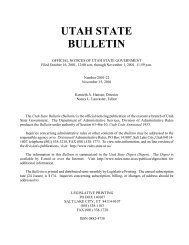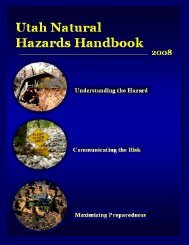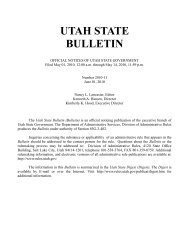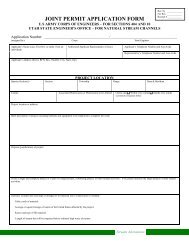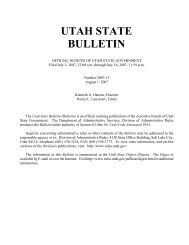Lynx avoidance [PDF] - Wisconsin Department of Natural Resources
Lynx avoidance [PDF] - Wisconsin Department of Natural Resources
Lynx avoidance [PDF] - Wisconsin Department of Natural Resources
Create successful ePaper yourself
Turn your PDF publications into a flip-book with our unique Google optimized e-Paper software.
Life History and Diet<strong>Lynx</strong> normally breed during March–April whilebobcats breed during December–March in thesouthern portion <strong>of</strong> their range and during March–April in the northern portion. Litter sizes vary forlynx from 4 to 5 when prey is abundant to 2 to 3 whenprey is scarce. Bobcat litter sizes range from 1 to 6and average 2.7 kittens. The young <strong>of</strong> both speciesare independent by age 1 year, and by 2 years <strong>of</strong> agethey have grown to full size and usually breed.The snowshoe hare is by far the most important preyitem for lynx. The availability <strong>of</strong> hares largelycontrols lynx abundance across most <strong>of</strong> their range.Other prey species important to lynx are red squirrels,mice, other rodents, and birds. Bobcat diet consistsmainly <strong>of</strong> cottontail rabbits, jackrabbits, and snowshoehares, but they also consume mice, otherrodents, birds, and deer.Distribution and Habitat Preferences<strong>Lynx</strong> occur across most <strong>of</strong> Alaska and Canada. Since1990 in the contiguous 48 states, lynx or their trackshave been documented in Colorado, Idaho, Oregon,Maine, Michigan, Minnesota, Montana, NewHampshire, Utah, Washington, <strong>Wisconsin</strong>, andWyoming. Established populations <strong>of</strong> lynx are presentin northern Maine, northeastern Minnesota, westernMontana, western Wyoming, and north-centralWashington. A small population was recentlyreintroduced in Colorado.12


![Lynx avoidance [PDF] - Wisconsin Department of Natural Resources](https://img.yumpu.com/41279089/12/500x640/lynx-avoidance-pdf-wisconsin-department-of-natural-resources.jpg)

